New Year, New Skills: 7 Hands-On Hobbies to Pick Up Right Now
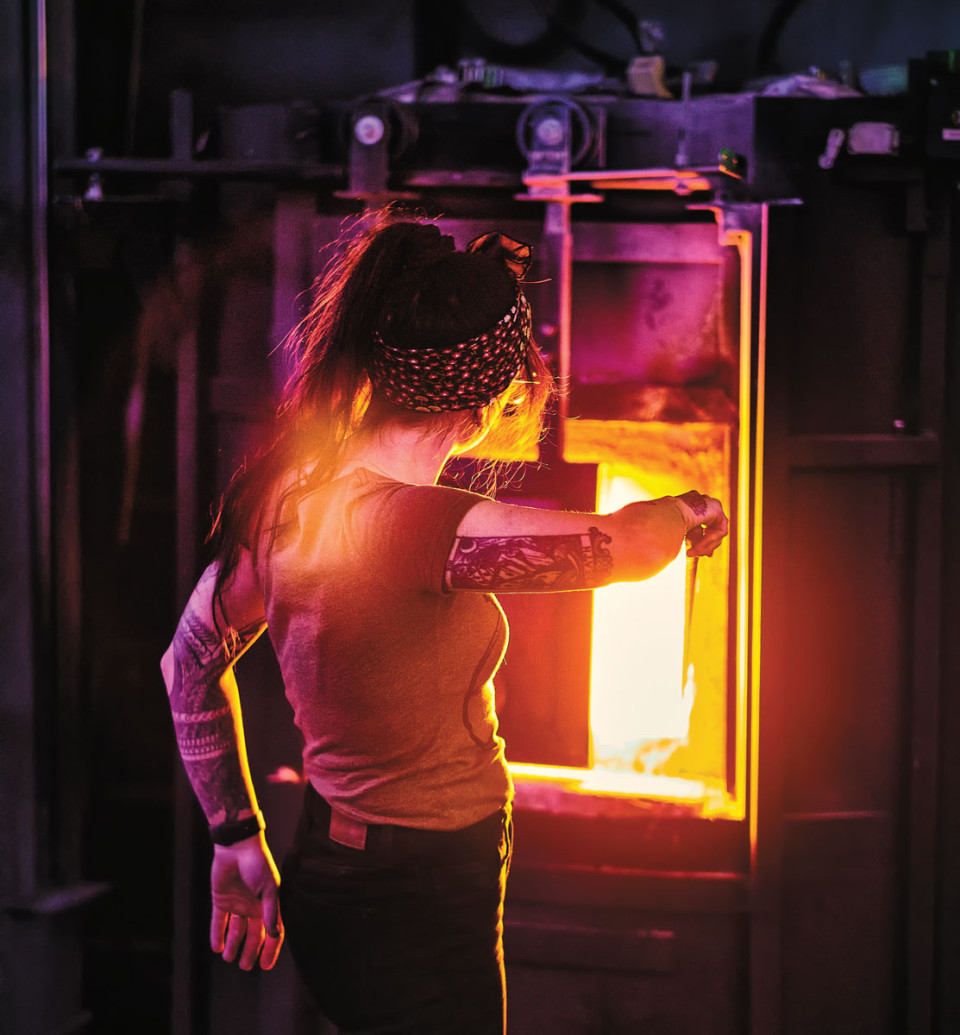
New hobbies, like glassblowing in East Falls, took off during the pandemic. / Photograph by Jeff Fusco
Hobbies are having a moment — an enduring silver lining of the pandemic — and are helping folks decompress from daily pressures, learn something cool and brag-worthy, and find creativity in the midst of the mundane. Many of the skill-based activities that are popular now are actually ancient, a reminder that some things never go out of style.
Stitching | Plant Stuff | Glassblowing | Mosaics | Pottery | Archery | Candle-Making
Stitching
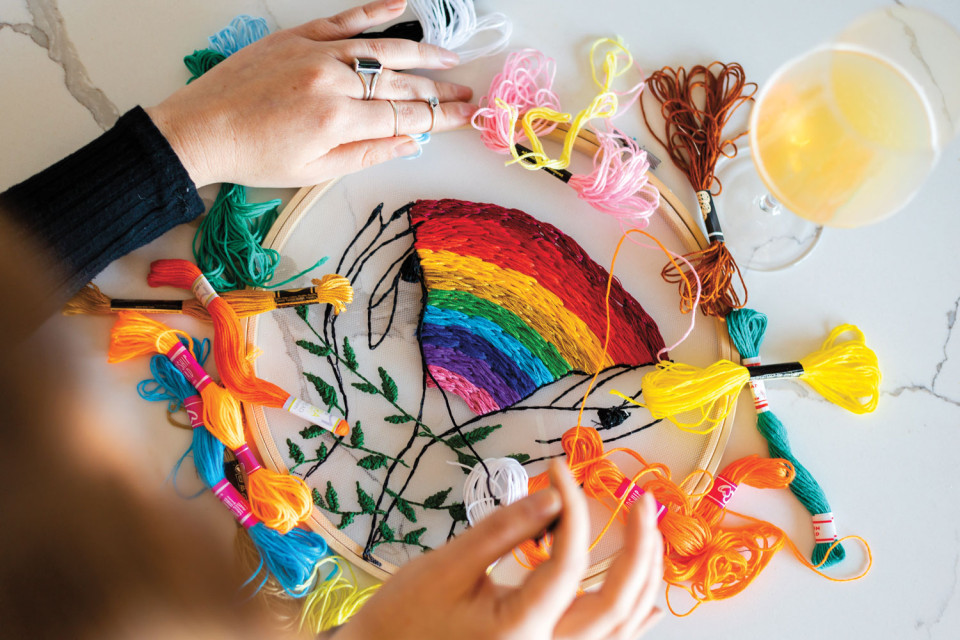
Embroidery with Sippin’ & Stitchin’ / Photograph by Daniel Knoll
Age-old traditions that use needles, yarn or thread aren’t as intimidating as they seem, thanks to some talented (and patient) local pros.
Sewing
Butcher’s Sew Shop in Bella Vista has it all when it comes to sewing: multi-week beginner classes, workshops for making clothes (tops, pants, activewear, swimsuits, coats — you name it!) by hand or with a machine, and programming for seamsters as young as five.
Knitting
The city proper’s knitting mecca is Grad Hospital-based Loop, where you can learn how to interlink yarn and eventually make accessories like hats, scarves and cowls. One-on-one private lessons are offered Monday through Friday, too.
Embroidery
If you’re new to needlepoint and hand-stitching, book a workshop with Sippin’ & Stitchin’, a woman-owned embroidery biz hosting in-person pop-up sessions in South Jersey plus Philly and other cities — along with virtual classes — that will see you threading modern designs or Philly icons like Gritty and the LOVE sculpture.
Assorted Techniques
For a little of everything (plus crocheting, weaving and quilting), don’t sleep on Mount Airy-based Needles & Bolts and Wild Hand; Weaver House in East Passyunk; Jenkintown’s Luv2Knit & More; and NextFab, which has locations in Kensington, Grad Hospital and Wilmington.
6 Tips to Get Started
View this post on Instagram
New to hand-stitching or needlepoint? Here are six beginner tips from Lea Saccomanno, founder of Sippin’ & Stitchin’.
Gather supplies • Head to your favorite craft store — Saccomanno’s is the Resource Exchange in Kensington — and grab a hoop, some sturdy fabric, a few embroidery needles, and some cotton embroidery floss. She says a needle threader and sewing scissors are helpful but not necessary.
Get acquainted • “One of the things I wish I knew when I was learning was to give myself space to play around instead of jumping headfirst into a project,” she says. “I think letting yourself get a feel for the stitches and the craft itself a bit before taking on a big ol’ piece makes the process less intimidating and way more approachable.”
Prep the thread • Pull your embroidery floss from the skein so you have something to work with. Saccomanno says half an arm span — from the tip of your middle finger to your sternum — is good. Then use a steady hand or needle threader to load your needle, and tie a simple knot at the end of your floss.
Work the needle • “Always start your stitches through the back of your design, so your knots and any hanging threads aren’t showing on the front of your project,” Saccomanno advises. “With practice, you’ll be able to feel out where your needle is from the back of the hoop, so resist the urge to flip your hoop over with each stitch.”
Experiment with different stitches • In the workshop I took, Saccomanno taught the split stitch and the satin stitch. The former — which we used for outlining and working on curved lines — involves bringing the needle through the back of the hoop into the middle of your first stitch, which “splits” the thread of your previous stitch down the center. The latter is great for filling in a section: Create a stitch (no bigger than half an inch) across an area, then continue stacking stitches on top of one another until the space is filled in.
Tailor your design • A typical skein of embroidery floss is made of six strands of thread, which means you can play around with using one or two strands for smaller, delicate lines or three-plus strands for a fuller, bolder look.
Plant Stuff
View this post on Instagram
There’s nothing new about tending and growing plants and herbs for the sake of your general wellness. If you’ve developed a green thumb over the past few years — or are keen on having one — check out these folks.
Herbalism
Boosting your herbal knowledge is easy thanks to workshops hosted by Bartram’s Garden and West Philly-based registered herbalist Kelly McCarthy, who also co-runs an online apothecary, Philly Herb Hub, that offers free herbs and workshops to Black Philadelphians. Plus, Terra Luna Herbals — currently in the process of relocating to a new garden in Kensington and launching an herb-and-flower CSA — and Rittenhouse’s Dope Botanicals frequently offer pop-up learning sessions.
Gardening
Grow your green thumb with FarmerJawn, the local agriculture org that often puts on events like “Jawn Your Lawn” at its community garden center in Germantown. At Longwood Gardens, choose from workshops on topics like plant propagation, floral design, and even garden photography. Morris Arboretum in Chestnut Hill and the Pennsylvania Horticultural Society have an array of nature-centric classes throughout the year. There are also a ton of community gardens around the area that you can volunteer for.
Terrariums
Pretty Green Terrariums is the place to go to build your own mini greenhouse. Nearly every weekend, the Bella Vista shop hosts two-hour workshops that will see you creating a one-gallon bioactive terrarium — your own little self-sustaining natural ecosystem. There’s also Terrarium Therapy, which runs pop-up workshops throughout the tri-state area and online to help you make terrariums and succulent arrangements.
Glassblowing
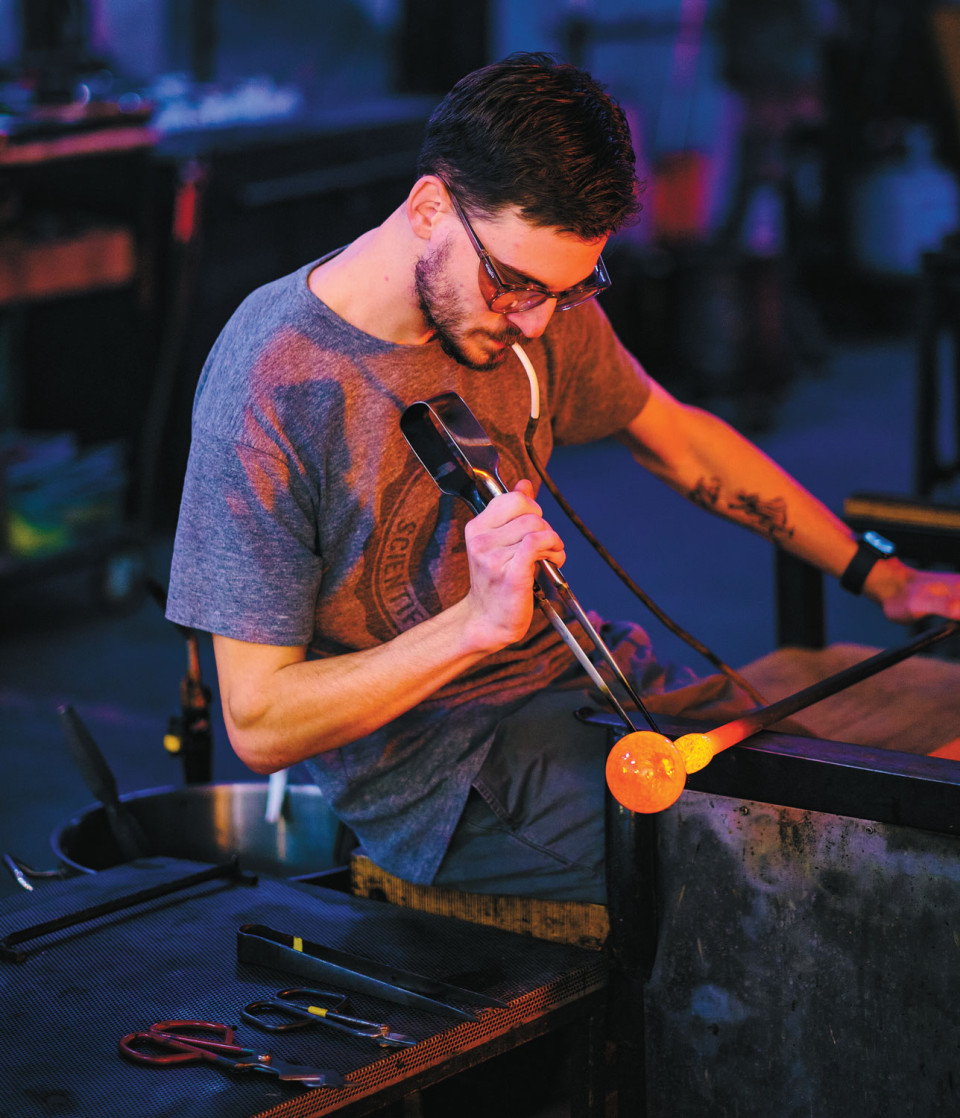
East Falls Glassworks / Photograph by Jeff Fusco
The art of shaping inflated molten glass into vases, drinkware and decorative art dates back to around the first century BCE, when craftsmen in Syria invented the blowpipe and essentially launched the technique that’s still used today. But recently, glassblowing’s popularity has skyrocketed, mainly thanks to the Netflix reality competition show Blown Away. Lucky for you, there are workshops throughout the region where you can roll, blow and shape scorching melted glass into wow-worthy art pieces. Not looking to travel too far? Make an appointment with Jim Loewer at his Bella Vista studio, or visit East Falls Glassworks or Chestnut Hill’s Crefeld Glass Studio for private and small-group lessons. Willing to trek? Check out Whitehall’s Warner Art Glass Center. At the latter, make the jellyfish — trust us.
Mosaics
View this post on Instagram
Whether you’re inspired by the earliest-known mosaics of Mesopotamia (that date back to the third millennium BCE!), Lisbon’s iconic 13th-century azulejos, or the New Age designs of Philadelphia’s Magic Gardens, Philly mosaic artists have your back. The best place to start is Bella Mosaic Art, a Mount Airy-based biz run by Jessica Gorlin Liddell — it hosts monthly date-night workshops and has open studio time on Tuesday and Thursday nights. Local visual artist Carol Shelkin runs in-person mosaics classes (usually in the ’burbs) and virtual sessions, and the Tileworks of Bucks County offers a variety of workshops at the Moravian Pottery and Tileworks Museum in Doylestown. Into mosaics’ not-so-distant cousin, stained glass? Hit up Greg Stefan Studios in Bridesburg for suncatcher workshops, multi-week courses and private lessons.
Pottery
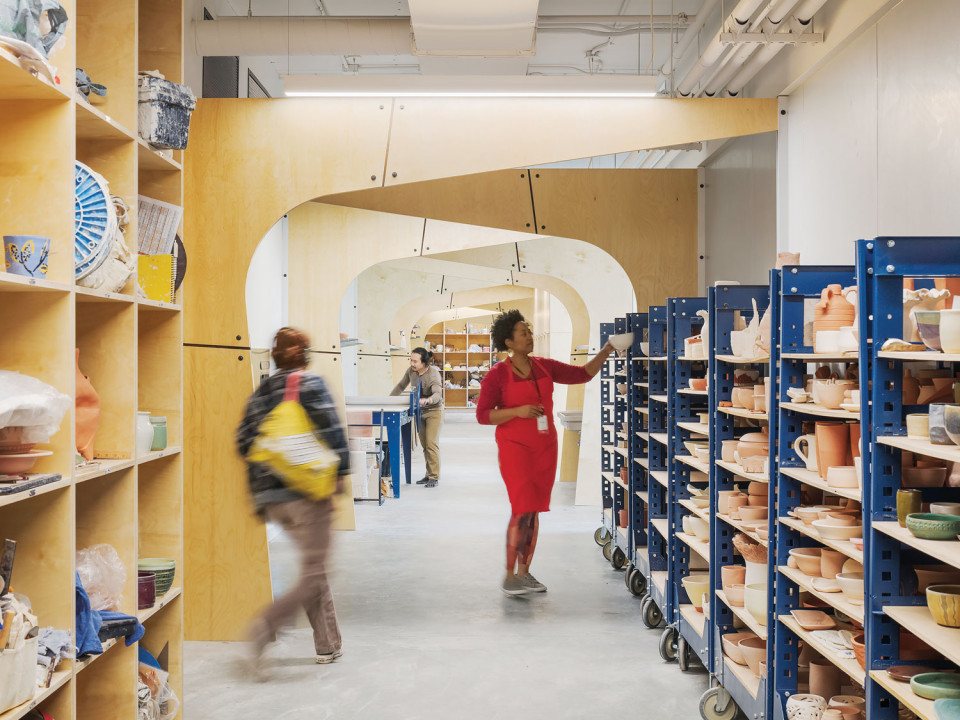
The Clay Studio in Kensington / Photograph by Sam Oberter
Pottery is said to be one of the oldest handicrafts, if not the oldest. Shaping clay, especially on the wheel, provides a meditative rhythm to counter the chaos of day-to-day life. The Clay Studio, which relocated from its long-standing Old City spot to a four-story facility in Kensington last April, features multiple classrooms, kiln rooms, artist workspaces, a demo studio, and its pop-up ceramics experience, the Claymobile — you’ve got a ton of learning opportunities. We also love West Philly-based Black Hound Clay Studio, Bella Vista’s Fleisher Art Memorial, and Centered Clay Studio out in Kennett Square for one-day workshops and multi-week lessons.
Archery
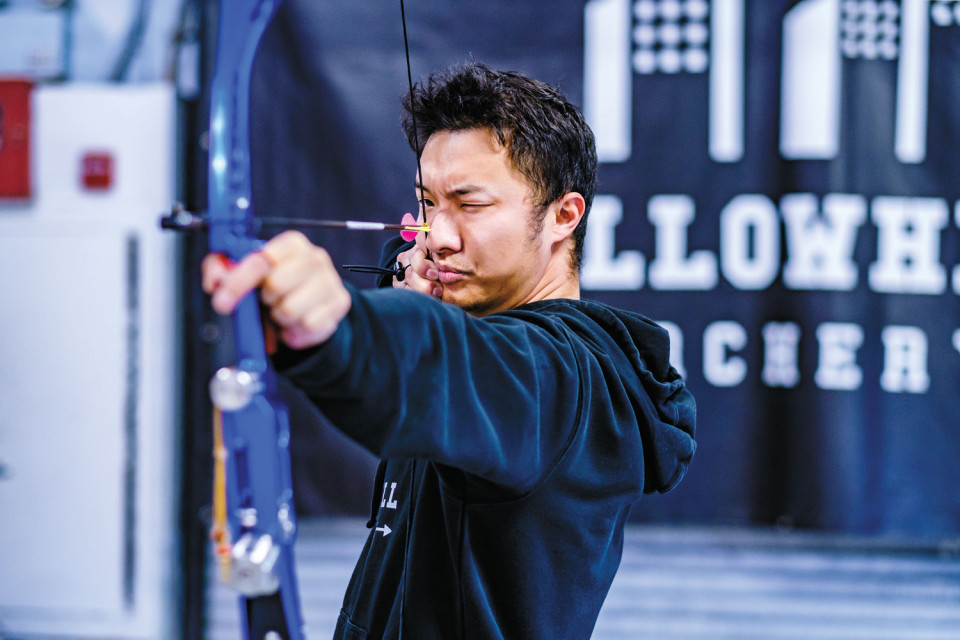
Callowhill Archery / Photograph by Jeff Fusco
Shooting arrows with a bow has been practiced for tens of thousands of years — first for hunting, then in combat, and now for sport and recreation (okay, and still for the original purpose). Public interest has surged in recent years thanks to movies like The Hunger Games, Brave and The Avengers. Currently, Callowhill Archery is the city’s only indoor archery range; you can learn the basics, take your best shot at date night, or visit for open range Wednesday through Sunday. In the ’burbs and beyond, there’s Middletown Archery in Media and Lambertville-based archery school X-Ring Archers, plus regional membership clubs that practice outdoors. Or channel your inner Katniss Everdeen and White Goodman at Ultimate Archery in Maple Shade, where you’ll battle it out dodgeball-style — but instead of those nightmarish rubber balls from your middle- school days, you attack opponents using bows and foam-tipped arrows.
Candle-Making
View this post on Instagram
Store-bought candles are fine, but there’s something about perfuming your home with one you made yourself. (It’s one way my husband, an amateur chandler, won me over when we first met.) If you’re ready to melt, scent and pour some wax, make your way to the Chandlery. The Grad Hospital shop hosts workshops in candle-making and scent design and even a wine/candle crossover in which you “train your nose using candle fragrances to recognize popular scents and aromas found in wine,” according to founder Stanford Ponson, who’s also a sommelier. For more DIY candle bars newish to the scene, try Queen Village’s Loomen Labs — which touts a zero-waste eco-conscious mission by using locally sourced wax and forgoing plastic — and Sweet Dreams Collection, whose “candle club” in Roxborough hosts creation classes complete with a brunch and bottomless mimosas. Say less!
How to Make Your Own Candle
View this post on Instagram
Stanford Ponson, owner of Old City Canning Co. and the Chandlery, offers a step-by-step guide for making your own candle at home.
Materials:
- 1 pound wax (Ponson recommends 100 percent coconut wax)
- Cooking pot
- Metal pouring pitcher
- Metal stirring spoon
- 1.2 ounces fragrance oil (per 16 ounces wax)
- Wick with wick sticker or tape or a hot glue gun
- 2 8-ounce candle containers
- Handheld candy or laser thermometer
1. Scoop about 16 ounces of dry wax into your metal pouring pitcher. Set aside.
2. Fill a cooking pot with one to two inches of water and bring to a boil on the stove.
3. Once the water boils, place the pitcher of wax in the cooking pot. Closely monitor the wax as it melts, stirring often with the metal spoon.
4. Slowly heat the melted wax until it reaches approximately 190 degrees Fahrenheit. (Note: Fragrance won’t bind with the wax at lower temperatures, and wax that exceeds 200 degrees Fahrenheit won’t set properly.)
5. When the wax reaches proper temperature, remove the pitcher from the pot and pour in the fragrance oil. Stir for two minutes to blend. Let the temperature of the wax cool to about 165 degrees, which helps it thicken and makes it easier to transfer.
6. Before pouring scented wax into your candle container, affix the wick’s base to the bottom. Most home kits come with wick stickers, but you can use double-sided tape or a hot glue gun to attach.
7. Slowly pour wax into the container while steadying the wick with your fingers, stopping half an inch from the top to allow all the wax — not just the wax around the wick — to melt when your candle burns.
8. To center the top of the wick, coil it around two popsicle sticks, chopsticks or pencils and center it in the vessel. Or clip the wick in place with a clothespin, like Ponson does. Whatever you choose, the instruments should lie across the top of the container.
9. When the wax is solid, uncoil or unclip the wick and trim it with scissors. (A quarter-inch wick is standard.) Let your candle cure for at least 24 hours before burning.
Published as “Get Your Hands Dirty” in the January 2023 issue of Philadelphia magazine.